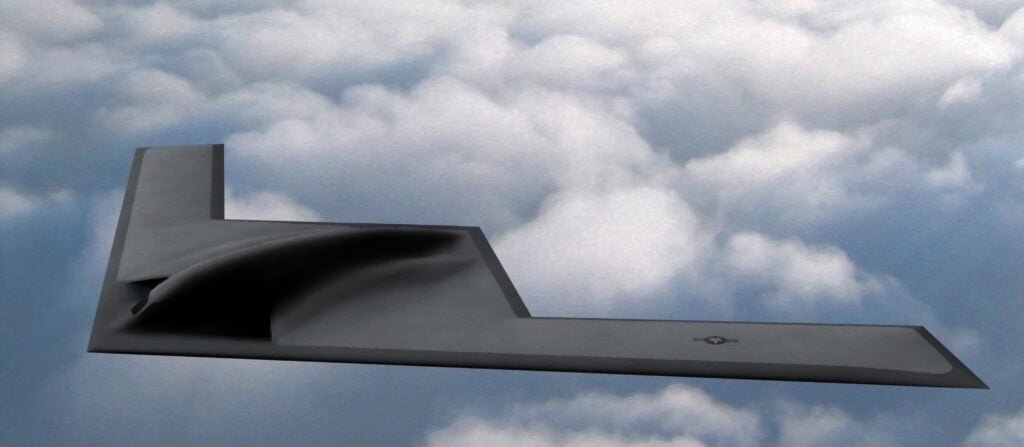
WASHINGTON: Will the B-21 bomber make its first flight in December 2021, as the Air Force Vice-Chief announced last month? “I wouldn’t bet on that date,” Randall Walden, director of the Air Force Rapid Capabilities Office (AFRCO).
While the end-of-’21 first flight suggested by Gen. Stephen Wilson is the “earliest” possible date, Walden told an Air Force Association audience this morning, the B-21 is unlikely to fly so soon.
“There’s a lot of things that have to happen between now and a couple of years, but in general terms that’s what we’re shooting for,” Walden told an Air Force association breakfast this morning.
Overall, he said the program is making good progress. It completed its design review last year, and the first test vehicle is now in production at Northrop Grumman’s Palmdale facility in California.
“I won’t go into a lot of detail about how far along we are, but suffice it to say we are working the production line,” he said, although he did note that the line was producing “big parts.”
In addition, the Air Force is standing up the 420th Test Squadron at Edwards AFB in California — the former B-2 testing facility — for B-21 Raider testing, the service announced Oct. 4.
“We’re getting ready to ty to accept that first airplane coming out,” Walden said.
The B-21 is a central cog in the Air Force’s multi-domain strategy. While designed to be capable of carrying nuclear weapons, the top-secret plane is believed to be primarily designed to penetrate Chinese and Russian air defenses and drop conventional precision weapons.
Walden reiterated the Air Force’s current plan to build “a minimum of a hundred” B-21s. “The production line should be able to handle that easily,” he said, adding that, “based on the timing, if we wanted to ramp up or build more, we could go do that depending on what the nation needs.”
As Breaking D readers know, the Air Force has been signaling that more B-21s are likely. Air Force Global Strike Commander Gen. Timothy Ray last month made a point of citing a study showing a need for 225 bombers in total — 50 more than the current plan that would see a force comprised of 100 B-21s and 75 B-52s.

In other news, Walden gave the audience a brief update on the X-37B, the Air Force’s robotic mini-space shuttle that has intrigued space watchers since its inception in 2010. The current mission, Mission 5, was launched in September 2017 on a SpaceX Falcon 9. It has been in orbit for 777 days, Walden said, surpassing the record of 717 days set by the last mission.
This is the kind of endurance a human crew simply can’t match without worrying health consequences. The record for the longest continuous period a human has spent in space was set by Russian cosmonaut Valeri Polyakov aboard the Mir space station in in 1994-1995. That record, 678.7 days in space, has stood ever since.
Walden didn’t say much more about its highly classified mission than what little is already known: that it is a test vehicle. “We’re doing experimentation. You know that, publicly we’ve said that,” he said. “We’re doing experimentation predominantly to get after what I’ll say is buying down risks for things that can be very expensive in space, and get a good solid understanding of how one would prepare ourselves for either a large buy, an expensive buy if you will, or in this case, get on with how one want to operate in the future.”
Asked whether the Air Force might need more X-37Bs, or a follow-on, in the future, Walden said “the data is still out.” He noted that the current two space planes are “workhorses,” that are “doing quite well.” .